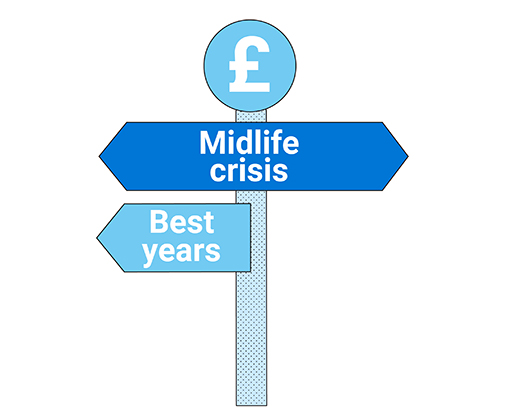2 Planning ahead
Time to do some forward thinking. What plans do you and your family have? How financially prepared are you for these? To help below are a few events that typically apply to people in midlife.
- Would you like to make changes to your work that could affect your income – perhaps set up your own business or move to part-time work?
- How might you manage financially if you were made redundant or couldn’t work for a long period of time?
- Do you have a house move in mind? Are you looking to move to a larger house or, perhaps, buy a second home? In the longer term you might consider downsizing to a smaller home – if you have children, maybe when they have moved out.
- Do you need to help pay for your children’s higher education? Some financial help is usually needed to supplement student loans.
- Do you anticipate contributing to major expenses as your children grow up – such as helping them onto the housing ladder or paying for their weddings?
- Are you anticipating an inheritance?
- Do you have family members who might need more care in the future which could need funding?
Activity 1: Planning ahead
How many of the midlife events or plans listed apply to you and your family?
Are there others not in the list? Perhaps there’s something quite routine – like buying or leasing a new car?
For each event or plan that does apply have you got a financial plan in place – or, at least in mind?
Your focus should be on the events and plans that will require a significant amount of money. So for each of these fill in the table below. In the right-hand column you can select the way you plan to fund these – choosing from borrowing, saving, asset sale, gift, income, inheritance and other. If more than one method of funding is going to be used enter the event twice or more to capture every way you intend to pay for it.
| Event/Plan | Estimated date | Estimated cost | How do you plan to fund this? (income, borrowing, savings, asset sale, gift, inheritance, other) |
|---|---|---|---|
Discussion
Drawing up the list is a useful planning exercise. You can, for example, identify those points in the future when there could be cluster of costly events at the same time – something that will put pressure on your finances. It also helps to think ahead as to when extra money will be received by the household to help shoulder these costs - perhaps from an investment policy or a pension lump sum or even downsizing from the home you live in.
You can also look again at Activity 2 in Session 1 [Tip: hold Ctrl and click a link to open it in a new tab. (Hide tip)] to forecast the impact of these events on your net wealth and your wealth score.

